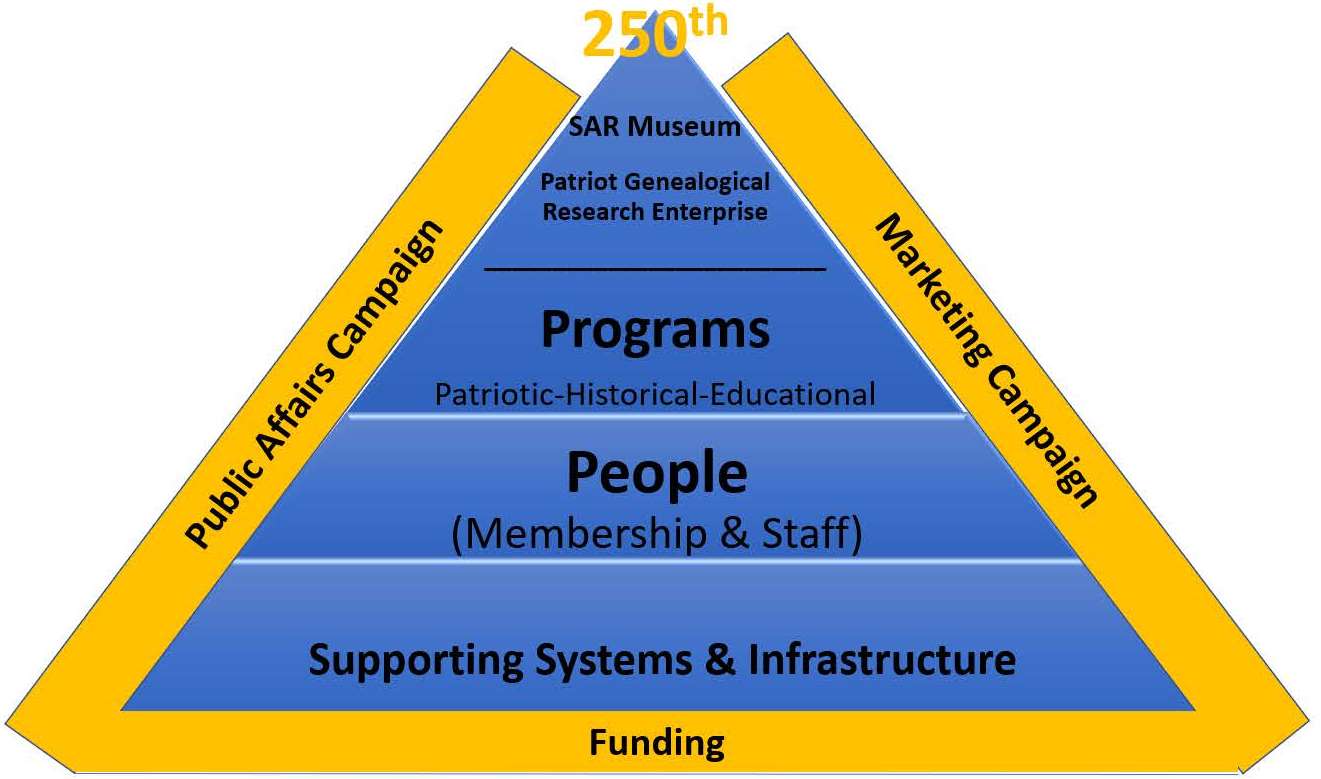The SAR Strategic Planning Committee was formed through specifications within SAR Bylaw, No. 19, Section 1 (h) delineating the SAR’s standing committees, as found in the SAR Handbook, which can be found here. It states:
- (h) Strategic Planning. The Strategic Planning Committee is responsible for reviewing programs, evaluating needs and making recommendations to the Executive Committee, Trustees, and Congress on its findings in the form of the NSSAR Strategic Plan, a multi-year road map of specific milestones and measurable goals.
The committee shall prepare a one-year, five-year and ten-year plan; submit the plan to the President General and Executive Committee for review and approval prior to submission of the strategic plan by the Secretary General to the Board of Trustees for its final approval; and review the strategic plan during each fiscal year and advise the President General, Executive Director, Executive Committee, and Board of Trustees of its comments.
Chronology of Strategic Planning
On August 1, 2013, the Strategic Planning Committee initiated a comprehensive strategic planning process designed to develop a strategic plan for the SAR that will provide direction and growth through 2025. It is important to review previous plans and projects, update these, and develop a cohesive SAR plan. This strategic plan should chart a direction, allow efforts to be aligned around common objectives, influence resource allocation decisions as appropriate, and allow a competitive advantage to be articulated clearly. Toward that end, the committee began a comprehensive strategic planning process consisting of developing the following strategic planning elements:
- Mission (Purpose)
- Vision (Desired end-state for various time intervals in the future) • Core Values (Guide behavior)
- Distinctive Capabilities (Unique core competencies required to fulfill the SAR’s mission) • Goals (Accomplishments through each distinctive capability in order to reach the SAR’s vision)
- Strategies (Define and direct goal accomplishments; critical factors that the SAR must do to achieve its distinctive capabilities; guide fulfillment of strategies with measurable results) • Tactics (Actions required to meet strategic objectives)
- Include results, dates initiated and completed, responsibility, revenues, and costs

